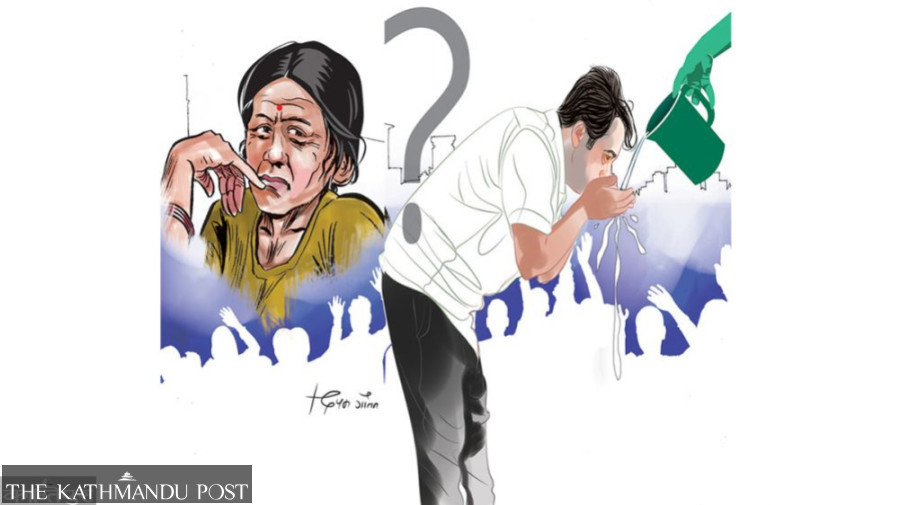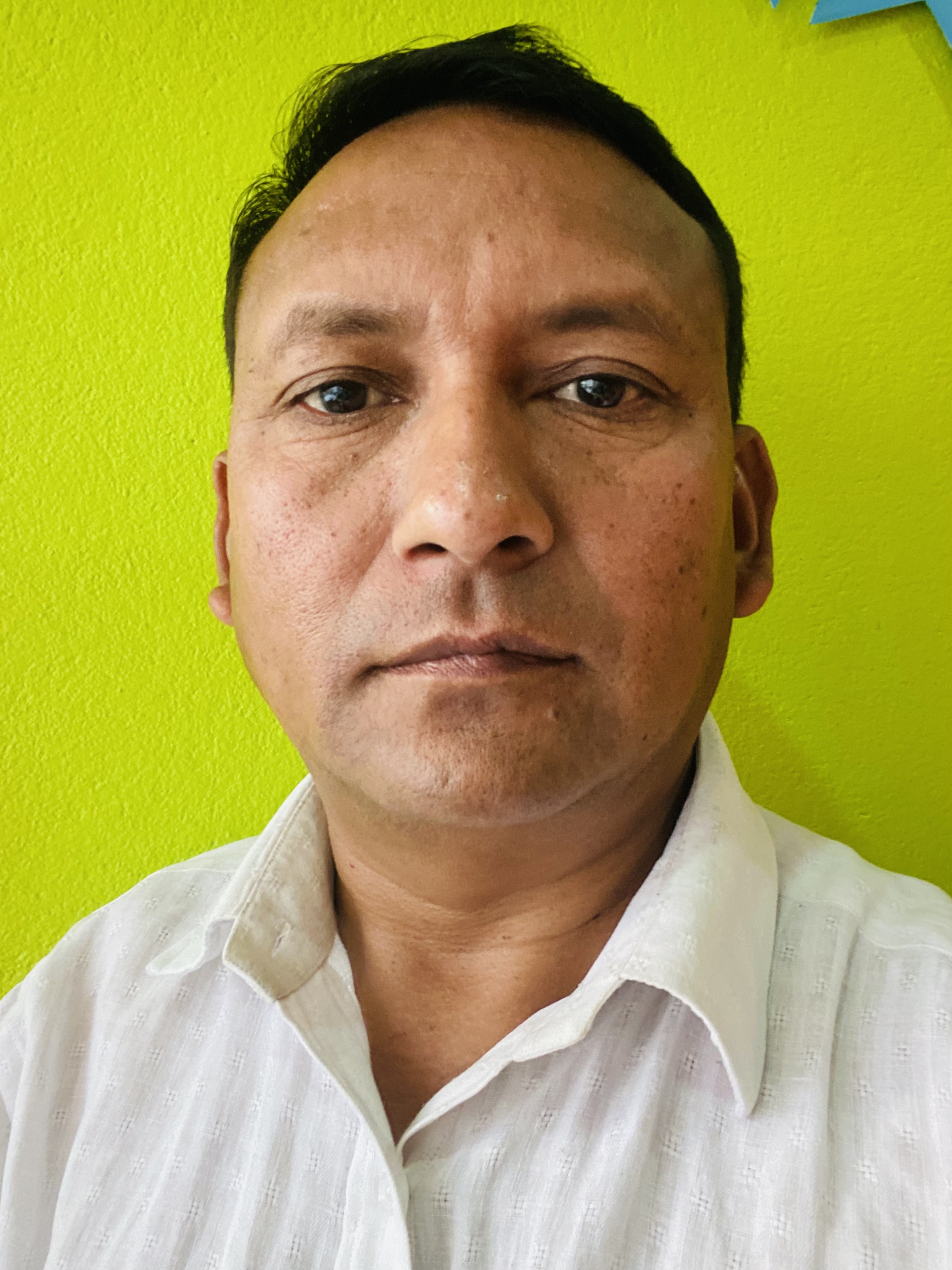Columns
Mitigating caste violence
Dalits must stop believing their political masters and focus more on religious and spiritual causes.
Mitra Pariyar
We are just back from a trip to Beni in Myagdi district, where the dead body of a 19-year-old pregnant Dalit teenager brutally knifed by her former upper-caste lover eerily awaits justice. The locals discovered the crime in a nearby forest several months after the gruesome murder. The Myagdi police have recently arrested the suspects and are collecting evidence to present to the court. The victim’s parents are too poor and unable to speak out, but some local Dalits have been pressurising the district administration to deliver justice through street demonstrations and lobbying.
As Myagdi’s Chief District Officer and Police officials tried to reassure us during our meeting, the legal process seems to be progressing smoothly. Unlike in most cases of violence against Dalits, political parties haven't interfered with the legal process on behalf of the murderer. Yet the agitating Dalits aren’t entirely convinced of a positive outcome. They will continue to monitor the case closely, and our activist organisation, the Caste Watch Network (CWN), will do the same from our end in Kathmandu.
The persistent interference of corrupt and immoral politicians has worsened a poorly resourced and unreliable judicial system. This issue has severely impacted the entire country. People of all castes, particularly the poor and the marginalised, suffer from the denial of justice. The numbers of Dalits affected by this are, however, disproportionately higher.
We need to reform and revitalise the political and legal systems to get to the bottom of the dire situation of Dalits and seek appropriate remedies. The government and policymakers must pay more attention to the informal causes of caste violence and other forms of Dalit suffering, namely the religious and the spiritual.
Hidden in plain sight
Nepal’s Dalits suffer from what Columbia University Professor Gayatri Chakravorty Spivak famously called “epistemic violence”. This means that the upper castes control what they know and how they know. Dalit heads have Bahun brains; Dalit eyes have Bahun visions. They are often unable to separate the wheat from the chaff.
Let me be more explicit with a typical example of Dalit exclusion in towns. Most Dalits, including politicians and activists, struggle to rent property in places like Kathmandu, Pokhara and Beni because of the landlord’s fear of offending their lineage deities and ancestral spirits. There’s a wide understanding that the family deities and spirits don’t tolerate the breakdown of traditional caste rules, especially intermixing with the low caste.
In reality, Dalit intelligentsia and political class hardly ever mention this widely experienced cause of Dalit suffering. They may express their outrage and even take to the streets when the media covers an incident. Still, they don’t seriously consider targeting the causes rooted in religious and spiritual beliefs.
Most of the time, they dream of and talk about securing a place in the state mechanism. As instructed by their upper-caste political masters, Dalit activists believe that proportional representation and implementation of the modern laws alone would end caste discrimination. They fail to highlight that casteist texts and traditions, rituals and customs amongst Hindus and (to a degree) other faiths have effectively blocked the modern anti-caste laws.
The same epistemological confusion among mainstream Dalits surfaced in our discussion with Dalit activists in Beni on Sunday afternoon. Those deeply involved in party politics argued that religion had little or no influence on perpetuating the exclusion of and violence against Dalits. For them, proportional representation of Dalits in the state, including parliament and government, was paramount.
But the parents and close relatives of the murder victim—who lived in a remote village and were uneducated and inactive in party politics—had no delusions about the role of religious beliefs and practices in the loss of their daughter. Living in a highly segregated community, they suffered various forms of humiliation, exclusion and mental torture based on people’s eagerness to abide by what they saw as the divine authority on caste hierarchy. What was written in the 2006 law against caste discrimination and in the 2015 secular constitution of the country didn’t matter at all in the village life!
A man having an extramarital affair, or even two wives, wasn’t per se a new or unacceptable thing in their traditional society in Myagdi. Most intolerable for the high-caste family and the entire village was the involvement of a Damai woman—someone considered ritually polluted. She had to be disposed of not because of her personal shortcomings or behaviour but because her marriage would potentially invite the terrible wrath of lineage deities, village gods and goddesses, so much so that those offended spirits could cause death and destruction in the family, the kinship, and the whole village! It was thus deemed a terrible danger to everybody. Perhaps this danger encouraged the suspected culprit and his family to kill both the woman and her foetus. It was probably considered the safest way forward, given that the woman belonged to a typically poor and outcast family.
Everything I’ve stated here is no new knowledge. However, I worry about the persistent silence around the issue of religious beliefs perpetuating caste hatred. Just because these religious/spiritual causes don’t count in the legal process doesn’t mean we shouldn’t consider them. If we want to liberate Dalits from oppression in their everyday lives, these common causes shouldn’t be ignored.
Mitigation strategies
It’s time the Nepali parliament and government seriously considered the problem of caste hatred and violence instigated by religious and cultural beliefs—something not exclusive to Hindus anymore. They should support and encourage sociological and anthropological research to examine what’s happening on the ground level and what’s stopping the force of law from influencing people’s lives.
It’s also imperative for the Dalit activists to wake up to the fact that caste hate is not just a political and legal matter; it’s also a religious and cultural issue. No law can be effectively employed until it synchronises with popular customs and beliefs. Dalits must stop believing what their political masters tell them and focus more on religious and spiritual causes. This could be based on their own experiences and observations. It’s well-known that many Dalit ministers and MPs have struggled to rent properties around Singha Durbar.
The entire Dalit community wants to see the murderer of a pregnant Dalit teenager in Myagdi duly punished. Pursuing justice is crucial, and we should all join hands to ensure that the culprits don’t evade jail.
We should be equally mindful that throwing a few criminals in prison hasn’t—will not—per se trigger societal change. Dalit lives and properties will be safer only when the deeply ingrained religious and spiritual causes are tackled.




 13.12°C Kathmandu
13.12°C Kathmandu













%20(1).jpg&w=300&height=200)

